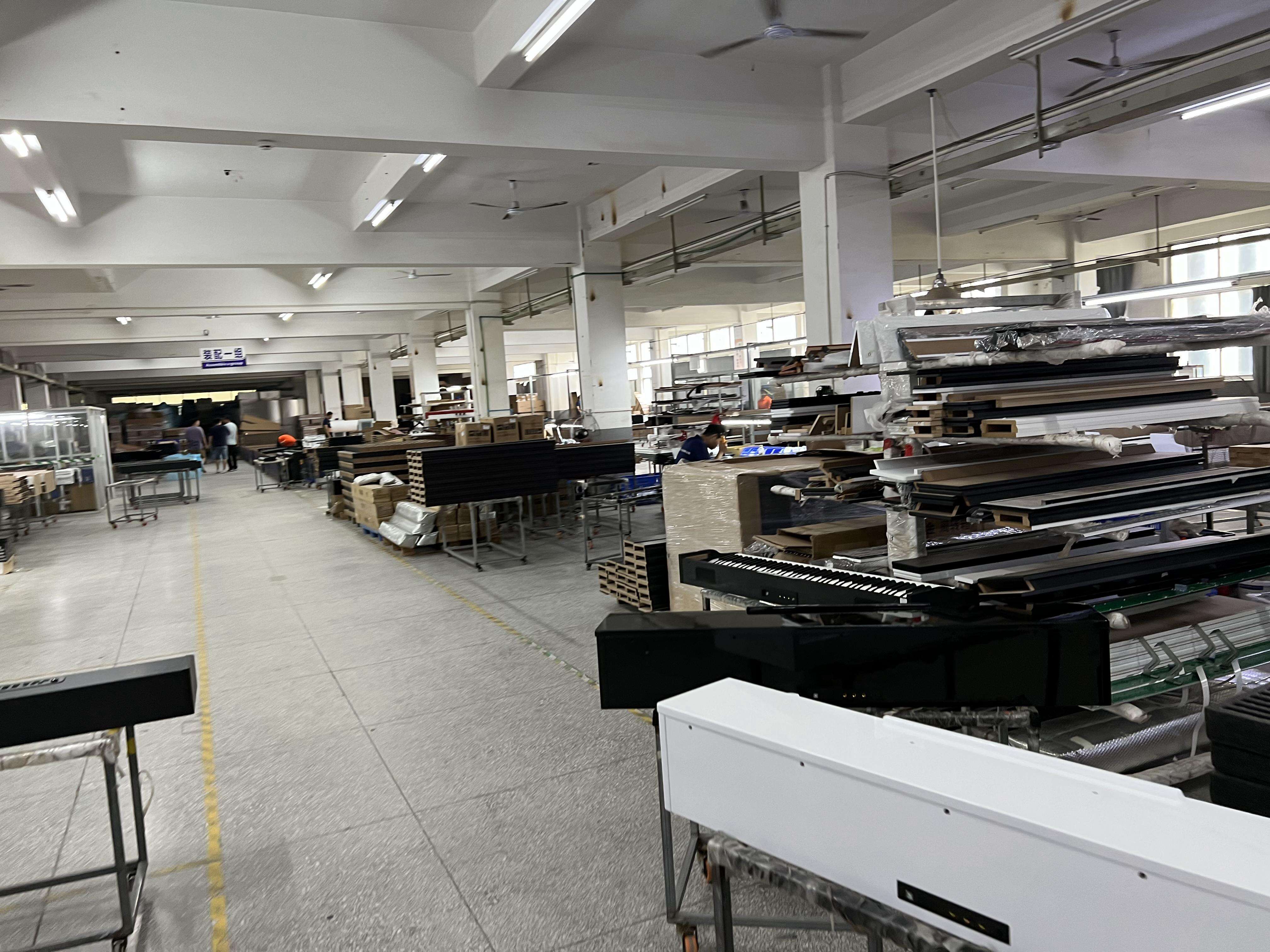

The manufacturing process of an 88-key digital piano is a complex and delicate process that requires a combination of advanced technology and exquisite craftsmanship to ensure that its sound quality, appearance and durability reach a high level. The following is a general overview of the craftsmanship of the 88-key digital piano:
1. Desain dan perencanaan
Design Phase: Engineers and designers will use computer-aided design (CAD) software to create initial concepts and design plans for the digital piano. This includes the design of the body structure, keyboard layout, tone sampling, etc.
Material selection: During the design stage, materials suitable for digital pianos need to be selected, such as wood, metal, plastic, etc. These materials must have good acoustic properties, stability and appearance quality.
2. Proses manufaktur
Body Manufacturing: The body of a digital piano is usually made of wood, steel, or plastic. Wooden bodies require cutting, carving, and splicing processes, while metal or plastic bodies require molding.
Keyboard Manufacturing: The keyboard is one of the core components of a digital piano and is made of plastic or synthetic materials. Keyboards require precise cutting and engraving to ensure each key is the correct size, shape and spacing.
Tone sampling: The sound of a digital piano is obtained by sampling the sound of a traditional piano and processing it digitally. Manufacturers use professional recording equipment to sample different types of pianos and process them in the digital piano's built-in audio processor to produce high-quality sounds.
Electronic component installation: The digital piano has various built-in electronic components, such as audio processor, electronic keyboard, display screen, etc. These components need to be mounted precisely inside the body and connected via the circuit board.
3. Assembly and debugging
Assembly: Once the individual components have been manufactured, the digital piano is assembled into the final product. This includes installing components such as keyboards, speakers, power supplies, and making final adjustments and adjustments.
Debugging: After the assembly is completed, technicians will conduct strict testing and debugging of the digital piano to ensure that all its functions and sound quality meet standards. This includes checks on keyboard sensitivity, tone quality, proper operation of electronic components, etc.
4. Kontrol dan inspeksi kualitas
Quality Control: During the production process, the manufacturer will implement strict quality control measures to ensure that each digital piano has a consistent level of quality. This includes inspection of raw materials, sampling inspections during production and comprehensive inspection of the final product.
Inspection and Adjustments: After completion of production, the digital piano will undergo final inspection and adjustments. This includes checking for cosmetic defects, sound quality, keyboard sensitivity, etc., and repairing and adjusting the problems found.
To sum up, the manufacturing process of the 88-key digital piano involves many aspects such as design, material selection, manufacturing process, assembly and debugging, and quality control. It requires the manufacturer's exquisite technology and strict quality management to ensure the quality and quality of the final product. Performance reaches a high level.


 EN
EN
 AR
AR
 DA
DA
 NL
NL
 FR
FR
 DE
DE
 EL
EL
 HI
HI
 IT
IT
 JA
JA
 KO
KO
 TIDAK
TIDAK
 PL
PL
 PT
PT
 RU
RU
 ES
ES
 SV
SV
 TL
TL
 ID
ID
 SR
SR
 VI
VI
 ET
ET
 HU
HU
 MT
MT
 TH
TH
 TR
TR
 FA
FA
 MS
MS
 SW
SW
 BE
BE
 AZ
AZ
 KA
KA
 BN
BN
 HA
HA
 JW
JW
 MR
MR
 PA
PA
 TA
TA
 TE
TE
 KK
KK
 UZ
UZ




